Montpellier
Top-Rated Attractions & Things to Do in Montpellier
Montpellier, in the Languedoc region, happily sneaks under the mass-tourism radar that overwhelms neighboring Provence. However, this sun-drenched southern French city has enough attractions to rival Provençal charm and culture. Like an open-air museum, Montpellier dazzles visitors with its tree-lined boulevards, graceful aristocratic mansions, elegant public squares, and hidden gardens.
Despite the city's old-world character, trendiness rules in Montpellier, thanks to a youthful university-student population. Locals also display a sense of art de vivre and an appreciation for fashion. It says something that Montpellier commissioned couturier Christian Lacroix to beautify the city's new tramways. Trams on the lignes 3 and 4 feature the designer's whimsical artistic renditions of Montpellier monuments, friendly sea monsters, and glittering jewels.
The best place to begin touring Montpellier is at the historic center, known as L'Écusson, a conglomeration of atmospheric medieval quarters. Within this tangle of winding pedestrian streets, visitors can explore art galleries, shop at artisan boutiques, stop at sidewalk cafés, visit exquisite churches, and dine at traditional restaurants. Getting lost among the narrow cobblestone lanes only adds to the experience of surprising discoveries.
For many travelers, another selling point of Montpellier is the balmy Mediterranean weather. The city boasts an average of 300 sunny days annually. Plus, just 30 kilometers away, the Plage de l'Espiguette (considered one of the best beaches in France) offers a dreamy seaside escape.
For more sightseeing ideas, read our list of the top things to do in Montpellier.
1. Place de la Comédie and L'Écusson
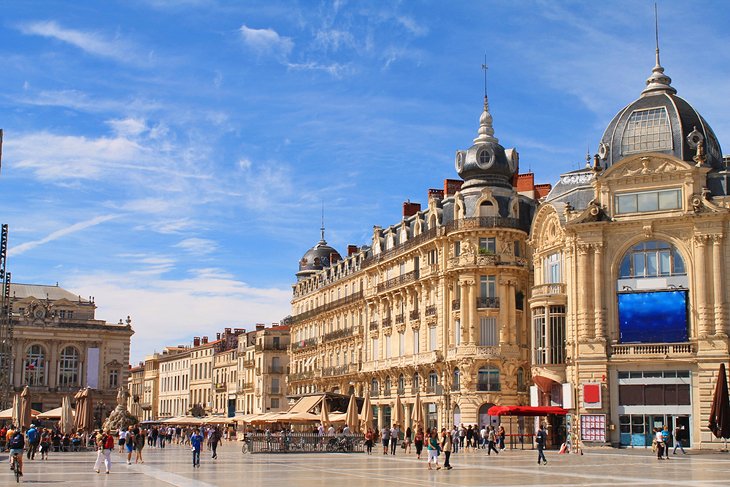
This grand public square is the heart of Montpellier, a center of activity that is busy from daytime until late hours in the evening. The Place de la Comédie is fondly called "l'Oeuf" ("The Egg") because of its elliptical shape. In the middle of the square stands the emblematic Fontaine des Trois Grâces (Three Graces statue).
Distinguished by its stately 19th-century Haussmann architecture (reminiscent of Paris), the Place de la Comédie is one of Europe's largest pedestrian spaces. Locals come here to go for a stroll, meet up with friends, socialize at the sunny sidewalk cafés, or attend a performance at the Opéra Comédie (Opera House). On occasion, street musicians entertain the crowds of people milling around the square.
The 18th-century Italianate Opéra Comédie theater presents classical music concerts and opera performances. At nighttime, colorful lighting illuminates the Opera House and other buildings, giving the square a festive appearance.
The Place de la Comédie is the ideal starting point to explore the historic center of Montpellier, known as L'Écusson. The French word "Écusson" translates to "escutcheon," which describes the area's shape, resembling a shield. This grouping of medieval quarters surrounds the modern Place de la Comédie and encompasses many top tourist attractions including the Musée Fabre, the Cathédrale Saint-Pierre, and the Place de la Canourgue.
For a self-guided walking itinerary of the Ecusson, head towards the Rue de la Loge, the main street in a pedestrian area that is brimming with enticing little boutiques. The narrow medieval streets that intersect with the Rue de la Loge are especially atmospheric.
From the Rue de la Loge, it's a short walk to the lovely Place Jean-Jaurès, where al fresco restaurant terraces spill out into the square. A pleasant stroll continues along the handsome Rue Foch, a good place for shopping and casual dining. A favorite spot for lunch or dinner is found off Rue Foch on the Rue Saint-Firmin, L'Artichaut, a Michelin Guide "Bib Gourmand" restaurant that serves delicious Mediterranean cuisine at an affordable price.
At the end of Rue Foch, the Arc de Triomphe leads into the Promenade du Peyrou. From here, tourists can take the Rue Barthez to the tree-lined Boulevard Henri IV, which borders the Jardin Des Plantes. Nearby is the Cathédrale Saint-Pierre, one of Montpellier's most impressive landmarks.
2. Promenade du Peyrou
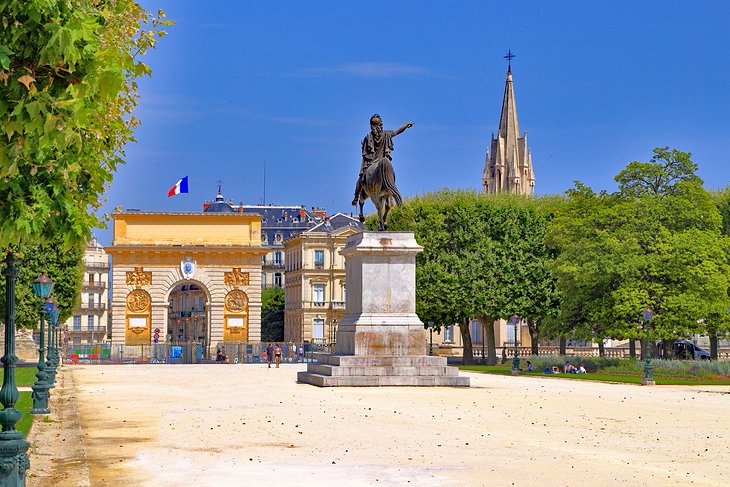
Just outside of Montpellier's historic center, the Promenade du Peyrou pays homage to France's celebrated Sun King with a monumental equestrian statue. The monarch is depicted heroically on horseback with an outstretched arm as if heading into battle.
Another tribute to the glory of Louis XIV is the Arc de Triomphe (Triumphal Arch), known as the Porte du Peyrou (Door of Peyrou) because it is the entrance to the Place Royale du Peyrou.
The Promenade du Peyrou park invites visitors to take a leisurely ramble along its elegant terraces and tree-shaded esplanade. Montpellier residents also use this space for jogging, lounging on the grassy lawns, and playing petanque, a typical game in the South of France that is similar to bocce ball.
Elevated above the rest of the town, the Promenade du Peyrou provides sensational panoramic views. The outlooks extend beyond the city to the surrounding countryside, the Cévennes mountain range, and all the way to the Mediterranean Sea (about 15 kilometers away). On clear days, it is possible to identify the Mount Canigou peak in the Pyrenees.
Tourists will also want to admire the Château d'Eau. Built in 1768, this neoclassical water tower connects to an aqueduct that once supplied the city with water. The tower's harmonious hexagonal form and delicate Corinthian columns create quite an impression.
A flea market is held at the Promenade du Peyrou on Sunday mornings. Shoppers might find vintage toys, home decor, porcelain dinnerware, tea sets, and furniture. The nearby Boulevard des Arceaux hosts an organic farmers' market on Tuesday and Saturday mornings.
3. Musée Fabre
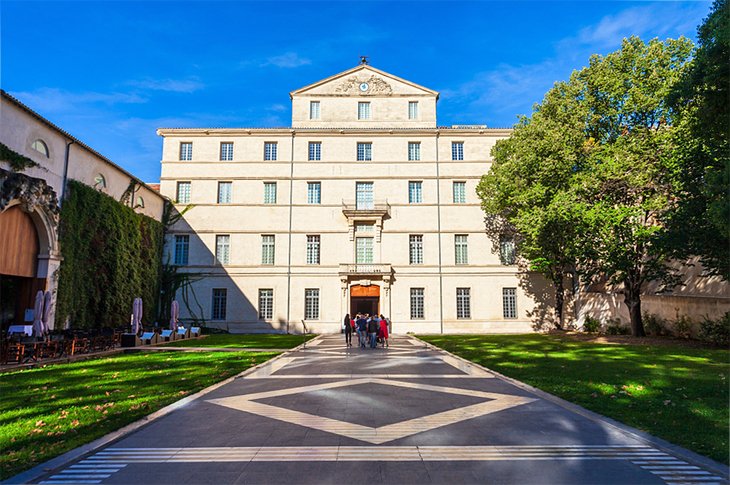
Found within L'Écusson, this prestigious fine arts museum displays an exceptional collection of European sculptures and paintings from the medieval era to the contemporary period. Especially well represented are Italian Renaissance art, 16th- and 17th-century Dutch paintings, and 17th- to 19th-century French landscape paintings.
The collection boasts works by the Old Masters, including Sandro Botticelli, Charles Le Brun, Nicholas Poussin, Pieter Paul Rubens, Jacques-Louis David, Dominique Jean-Auguste Ingres, Raphael, Paolo Veronese, Eugène Delacroix, and Francisco de Zurbaran, as well as other renowned artists such as Sir Joshua Reynolds. Among the masterpieces are the Exercices Militaires des Marocains and the portrait of Aspasia by Delacroix, Vénus et Adonis by Poussin, and L'Archange Gabriel by Zurbaran.
Noteworthy modern paintings include a beautiful Impressionist piece, Jeune Femme Assise Devant la Fenêtre by Berthe Morisot; the Jardin en fleurs à Sainte-Adresse by Claude Monet; and the Portrait d'Antonin Proust by Edouard Manet. Also not-to-be-missed are the still-life paintings by Robert Delauney and Henri Matisse, and landscape paintings by Jean-Baptiste-Camille Corot (La Pêche à l'Epervier) and Gustave Courbet (Le Bord de Mer à Palavas and Le Pont d'Ambrussum).
The museum has an entire gallery devoted to the work of Frédéric Bazille and his contemporaries. Montpellier's native son, Bazille was an exceptional 19th-century painter whose work is considered the precursor to Impressionist art.
Visitors can also view a collection of Arts Décoratifs (Decorative Arts) housed at a separate location in the Hôtel de Cabrières-Sabatier d'Espeyrant (6 bis Rue Montpelliéret). This gorgeous mansion reveals the lavish lifestyle of wealthy bourgeoisie society in Montpellier during the 19th century.
The museum is open Tuesday through Sunday from 10am to 6pm; it's closed on Mondays. The Hôtel de Cabrières-Sabatier d'Espeyrant (Decorative Arts collection) is open Tuesday through Sunday from 2pm to 6pm (closed Mondays and holidays).
4. Palais des Congrès de France
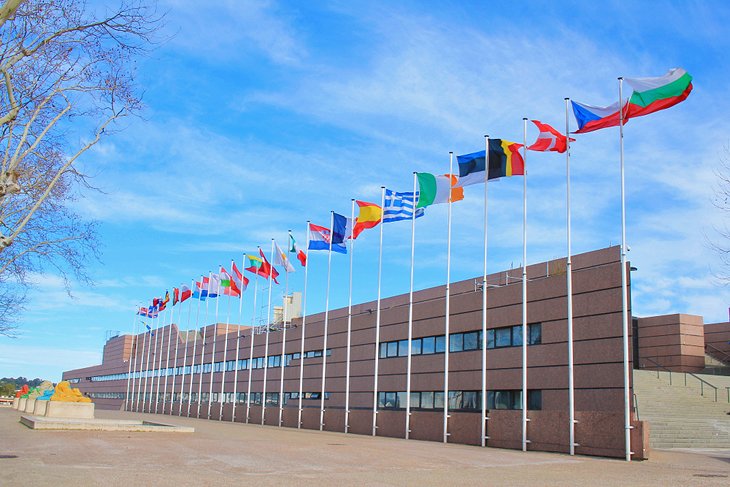
A hub for cultural events just outside of Montpellier's historic center, the modern Palais des Congrès de France provides a striking contrast to the city's older buildings. Pink granite covers the facade, while the sleek interior features exposed metal beams. The Palais des Congrès de France houses Le Corum conference center, which hosts business events and festivals, and the Opéra Berlioz (Opera House).
The esteemed Orchestre National Montpellier Occitanie company performs at the 2,000-seat auditorium of the Berlioz Opera House, which is renowned for its superb acoustics. One of the most inspiring things to do in Montpellier is attend a symphony or opera performance such as Madame Butterfly or Romeo and Juliet at this exceptional venue.
Behind the Palais des Congrès in the luxuriant Bassin du Champs de Mars park, Le Pavillon Populaire presents high-caliber photography exhibits throughout the year. Expositions showcase works by famous French and international artists.
5. Cathédrale Saint-Pierre
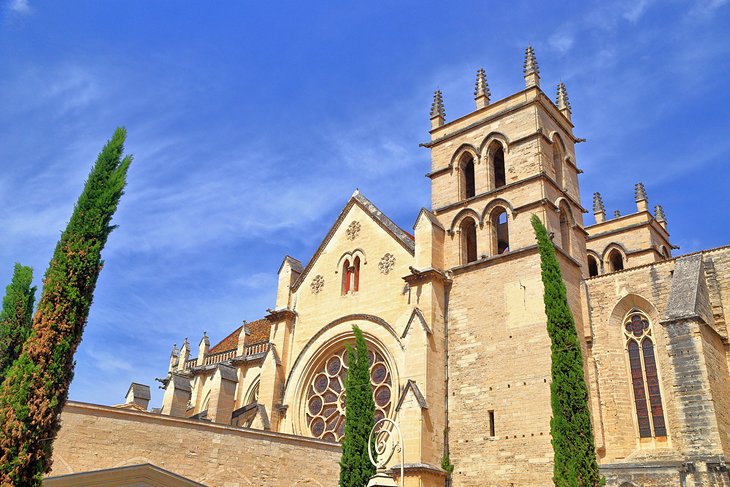
The unusual appearance of the Cathédrale Saint-Pierre results from its mishmash of architectural styles. Built between the 14th and 18th centuries, the cathedral has an imposing fortress-like facade featuring two medieval towers. The simple interior reveals a somber Gothic ambience.
6. Place de la Canourgue
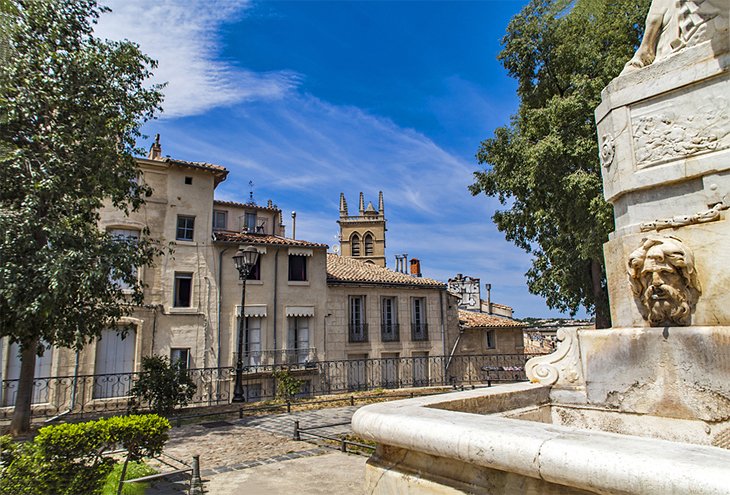
The Place de la Canourgue is one of the prettiest spots in L'Écusson. As Montpellier's oldest square, it's one of the best places to visit for a taste of elegant ambience.
Surrounded by 17th-century hôtel particuliers (aristocratic mansions) and shaded by leafy trees, the Place de la Canourgue has the feel of a romantic garden. Visitors should be sure to see the unicorn fountain and notice views of the cathedral in the background.
For passersby in need of sustenance, the Comptoir de l'Arc offers casual meals in an idyllic outdoor setting. This restaurant is a wonderful choice for a relaxing gourmet break in between sightseeing. Another option is Café Latitude, which serves coffee and refreshments inside or on the delightful sidewalk terrace.
Steps away is a great place to dine, Anga (19 Rue du Palais des Guilhem), which the Michelin guide rates as a "Bib Gourmand" restaurant for its affordable high-quality cuisine.
7. Quartier Saint-Roch
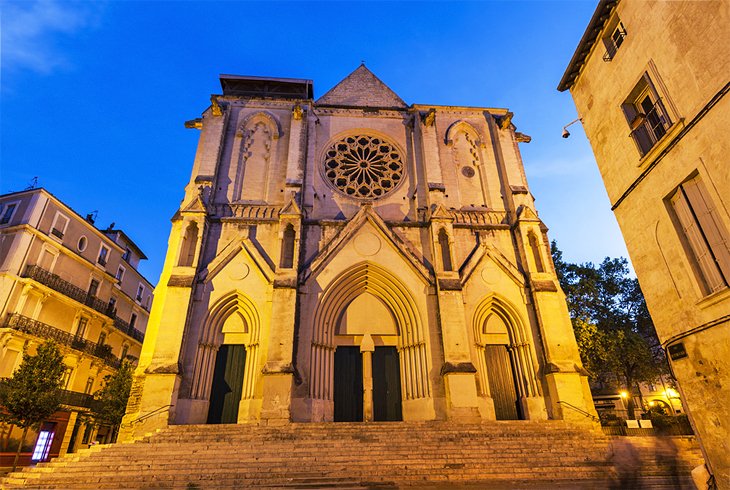
The Quartier Saint-Roch is a happening neighborhood in L'Ecusson, between the Rue Saint-Guilhem, the Grand Rue Jean Moulin, and the Jeu de Paume Boulevard. With its bustling café terraces and festive local hangouts, the Quartier Saint-Roch exudes a convivial spirit.
Many art galleries, antique shops, artisan boutiques, and bookstores await discovery. Dining options abound, with a wide variety of restaurants catering to diverse culinary tastes.
In this captivating medieval quarter, pedestrian-only streets encourage leisurely strolls, while quiet squares provide welcome space for a moment of repose. Tourists should be sure to explore the quaint Rue du Plan d'Agde, which has many restaurants and a lively nightlife scene. At the end of the Rue du Plan d'Agde is the quarter's most impressive landmark, the Eglise Saint-Roch, dedicated to the patron saint of Montpellier.
8. Jardin des Plantes
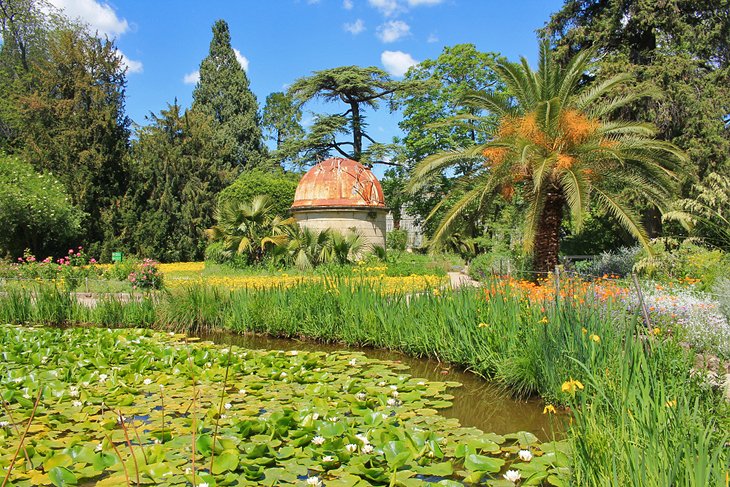
In 1593, King Henri IV commissioned the creation of the Jardin des Plantes, which is one of the first botanical gardens developed in Europe. The Jardin des Plantes became a model for similar gardens throughout France. Listed as a Historical Monument, the Montpellier Botanical Garden includes a manicured park and an arboretum.
9. Planet Ocean

Fittingly located at Montpellier's Port Marianne, the Planet Ocean plunges visitors into an exciting world of ocean-themed adventures. Visitors can discover more than 400 diverse species, including coral reefs, penguins, sharks, stingrays, clownfish, frogs, geckos, and iguanas. Kids enjoy learning about various aquatic habitats such as the Mediterranean, the North Pacific, and Polynesia.
More of a theme park than simply an aquarium, the Planet Ocean devotes plenty of space to interactive exhibits. Youngsters can participate in games and immersive activities such as a touch pool and a storm simulator.
10. Hôtel de Varennes
Tucked away on a small square in L'Ecusson, the Hôtel de Varennes gives visitors the chance to see the interior of a medieval hôtel particulier (mansion) typical of Montpellier. Although the building was renovated in the 18th century, it still has the original Gothic structure and grand halls. Two museums are housed within this mansion: Musée du Vieux Montpellier, which presents the history of Montpellier, and the Musée Fougau, a collection devoted to popular art and culture in the region.
11. Quartier Courrier
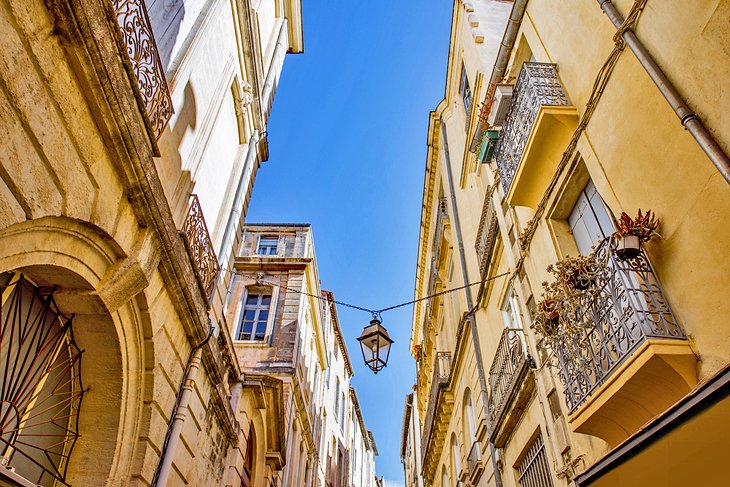
Bordering the Quartier Saint-Roche, the Quartier Courrier is an adorable neighborhood between the Place Sainte-Anne and the Place Saint-Roch in L'Écusson. The old buildings, medieval cobblestone streets, and narrow pedestrian lanes make this area an enchanting place to wander around. There are many tiny restaurants with small sidewalk terraces. The style of the neighborhood is considered "boboïsant" (French slang for "bohemian bourgeois").
12. Eglise Notre-Dame-des-Tables
(thanks to: www.planetware.com)
Comments
Post a Comment